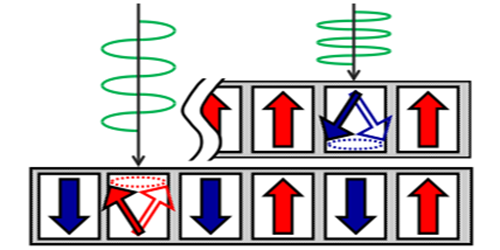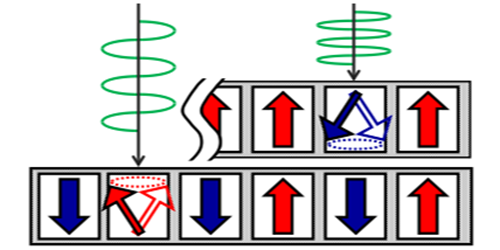Magnetizing the Third Dimension
Hard disk drives store data in magnetic materials where each bit of information is encoded in a 2D pattern of the material’s magnetization direction. The size of bits has rapidly decreased since the first hard disk drive was made in 1956, leading to a significant increase in the recording capacity. But miniaturization can’t go on forever. To meet ever-increasing data storage needs, future devices will need to move into the third dimension. Hirofumi Suto and colleagues at Toshiba Corporation in Japan have demonstrated a new 3D magnetic structure where the magnetization of each layer can be independently switched from one state to another in a single step.
The authors stacked two ferromagnetic layers made of cobalt and platinum on top of each other to form a two-bit nanometer-sized column structure. The thickness and composition of each layer were designed so that they had unequal ferromagnetic resonance frequencies. Both dc and microwave magnetic fields were applied to the bilayer stack to control its magnetization. Because of the layer-dependent resonance frequencies, a different magnetization excitation was induced in each layer by the microwave field. Therefore different dc magnetic field strengths were needed to flip the magnetization direction of each of the two layers. This allowed the authors to independently control the magnetization direction of each layer by simply tuning the frequency of the applied microwave field. The authors hope to be able to add additional layers to their nanocolumn, increasing the number of bits each contains and thus the potential recording density.
This research is published in Physical Review Applied.
–Katherine Wright





